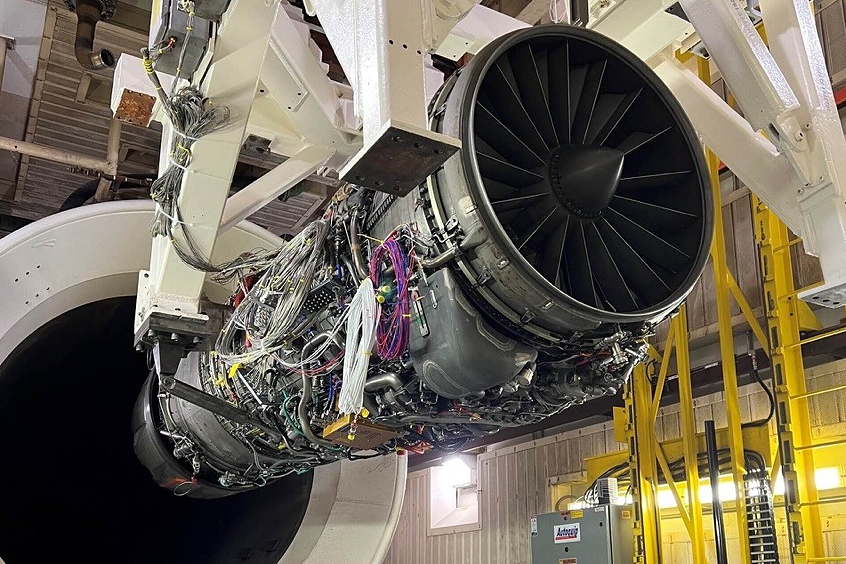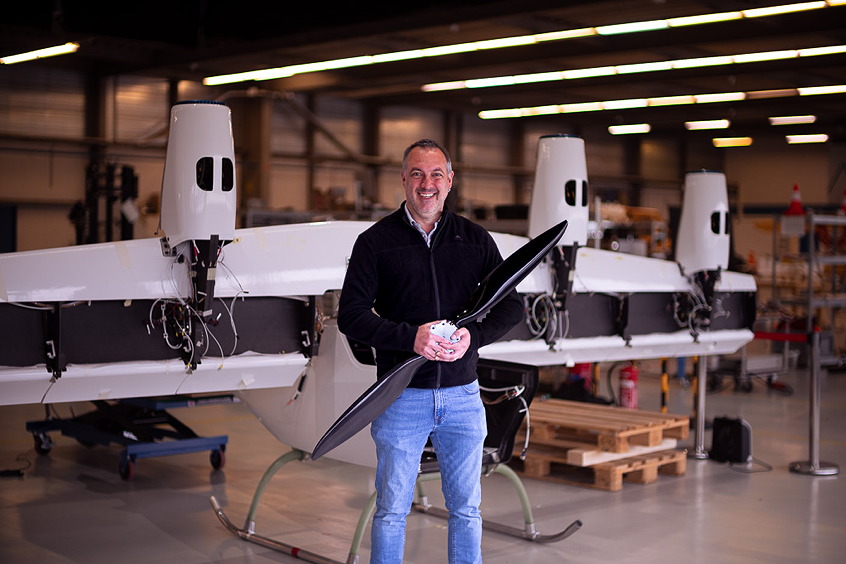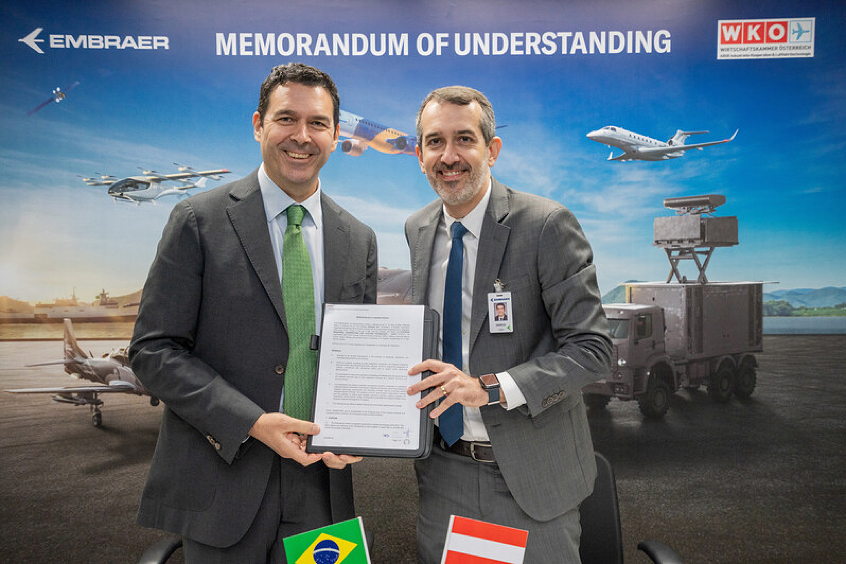The Rockwell Collins Remote Vision System (RVS) played an integral role as Boeing and U.S. Air Force aircrews successfully completed the KC-46A tanker's first refueling flight January 24 in the skies above Washington state.
Following takeoff from Boeing Field in Seattle, the KC-46A flight test team completed a series of checkpoints before smoothly offloading 1,600 pounds of fuel to an F-16 fighter aircraft flying at 20,000 feet.
“Today's refueling flight is an important milestone for the Air Force/Boeing team because it kicks off the Milestone C aerial refueling demonstration, which is the prerequisite for the low-rate initial production decision,” said Col. Christopher Coombs, U.S. Air Force KC-46 System Program Manager. “We have a lot of work yet to do, but this is an exciting time for the airmen who are preparing to fly, maintain and support the KC-46 Pegasus for decades to come.”
The Rockwell Collins RVS is a combination of 2-D and 3-D technologies in both visible and long wave infrared spectrums, providing visual information to support refueling operations. The RVS provides the ability for the air refueling operator to refuel aircraft at any time, in any weather and under any lighting conditions.
During the flight, the Air Force's air refueling operator, “flew” the tanker's 56-foot boom downward and waited for the F-16 to move into position before fully extending the boom into its refueling receptacle and the KC-46 then began offloading fuel to the fighter. When the fuel transfer was complete, the system automatically turned off the pumps and the operator smoothly retracted the boom.
The KC-46A that accomplished the refueling milestone shortly will begin refueling a number of other military aircraft in addition to the F-16, including a C-17, A-10, F/A-18 and AV-8B. This particular KC-46 (known as EMD-2) made its first flight September 25, 2015.
The program's first test aircraft (EMD-1), a 767-2C, has completed more than 260 flight test hours to date since making its first flight in December 2014. Aircraft EMD-3 and EMD-4 will make their initial flights later this year.
As part of a contract awarded in 2011 to design and develop the U.S. Air Force's next-generation tanker aircraft, Boeing is building four test aircraft – two are currently configured as 767-2Cs and two KC-46A tankers.
Boeing's KC-46A is a multirole tanker that can refuel all allied and coalition military aircraft compatible with international aerial refueling procedures, as well as having the ability to carry passengers, cargo and patients. Overall, Boeing plans to build 179 KC-46 aircraft for the U.S. Air Force.
In addition to the RVS, Rockwell Collins provides the following for the KC-46 tanker:
• Integrated display system featuring four 15.1-inch diagonal liquid crystal displays, built on proven technology from the Boeing 787 program, that deliver significantly higher levels of reliability and safety. Each display provides two independently controlled display windows, for a total of eight, that accommodate multiple display functions on a single screen.
• A Tactical Situational Awareness System (TSAS) processor built on a Joint Interoperability Test Command (JITC)-certified system. The TSAS provides situational awareness to the crew, routing cues to avoid imminent threats in the area, and awareness of friendly entities.
• Signal data concentrator network, a DO-178B and DO-254 certified system that forms the avionics network on the aircraft. It uses the ARINC 664 standard for fast translation and sharing of aircraft system information between components.
• State-of-the-art communications, navigation, surveillance, networking, and flight control systems.
| Contact details from our directory: | |
| Collins Aerospace, Avionics Division | Head-Up Displays, Radio Communications Equipment, Moving Maps, Enhanced Vision Systems (EVS), LCD Displays, Engine Indicator Instruments, Cabin Management Systems, Automatic Flight Control Systems, Inflight Entertainment, Automatic Direction Finders, Cabin Address Systems, Autopilots, Radar/Radio Altimeters, Distance Measuring Equipment, VOR (Omnirange) Receivers, Avionics Management Systems, Air-to-Ground Data Links, Multi-Mode Receivers (MMR), Engine Control Quadrants, Control Panels, Aircraft & Helicopter Controllers, Collision Avoidance Systems/TCAS, Helmet-Mounted Displays (HMD), Weather Mapping Radar, Inertial Components & Systems, Attitude and Heading Reference Systems, Navigation Antennas, Transceivers, Flight Recorders, Cockpit Printers, Flight Directors, Flight Management Systems, Electronic Flight Instrument Systems, Air Data Computers, Onboard Computers, UAV Control Software, GPS, Simulation Systems, Surveillance/Air Defense Radar, Engine Controls, Terrain Awareness and Warning Systems, Horizontal Situation Indicator, Instrument Landing Systems, Command, Control & Intelligence Systems, Airborne Communication Systems, Cockpit Video Displays, Onboard Intercom Systems |
| Related aircraft programs: |
| Boeing 767 |
| Related directory sectors: |
| Imaging and Visual Systems |
Weekly news by email:
See the latest Bulletin, and sign up free‑of‑charge for future editions.

Amprius and Stafl team up for battery pack innovation

RISE engine efficiency project gains momentum

Dufour picks Mejzlik propeller blades for the Aero2
